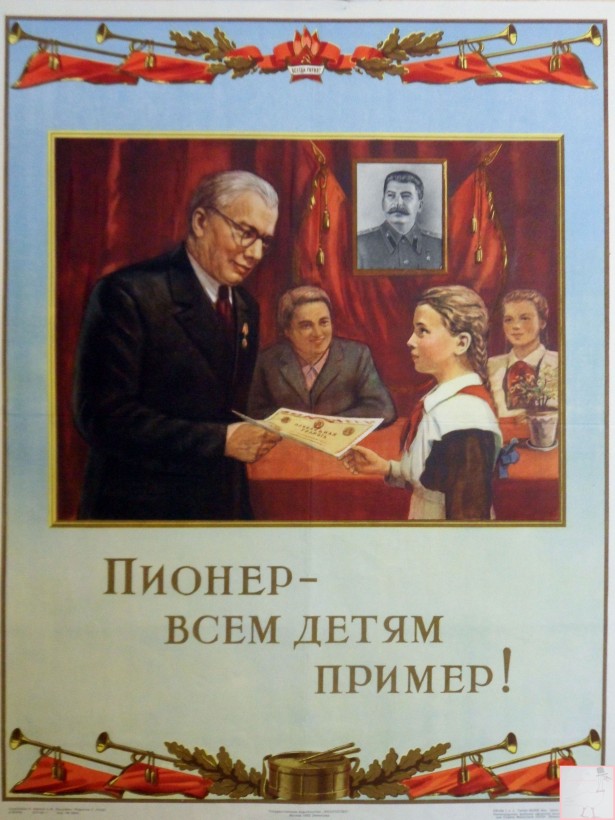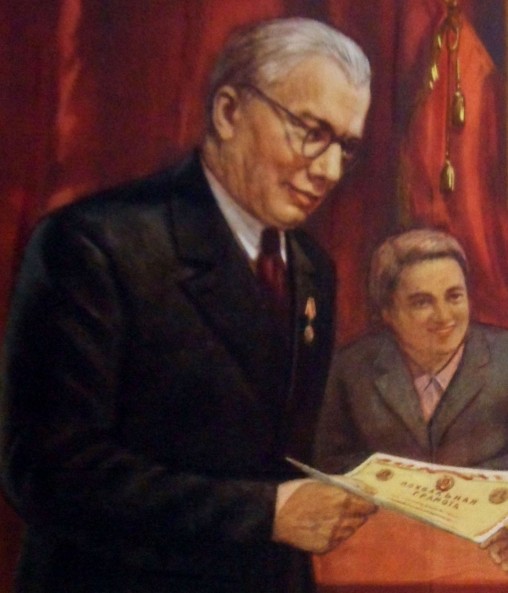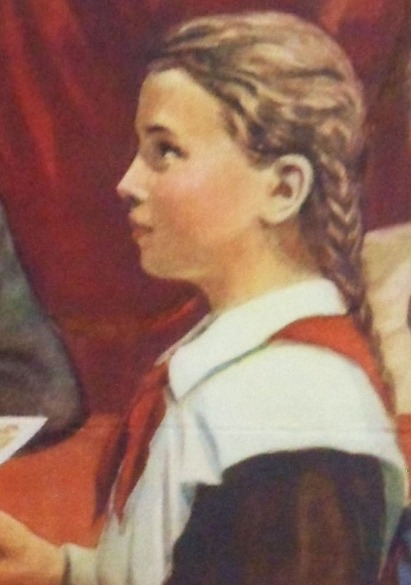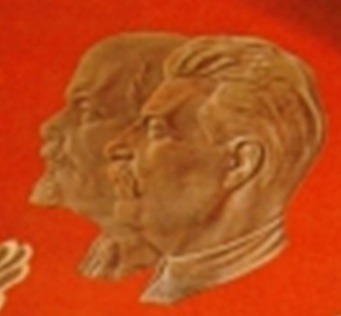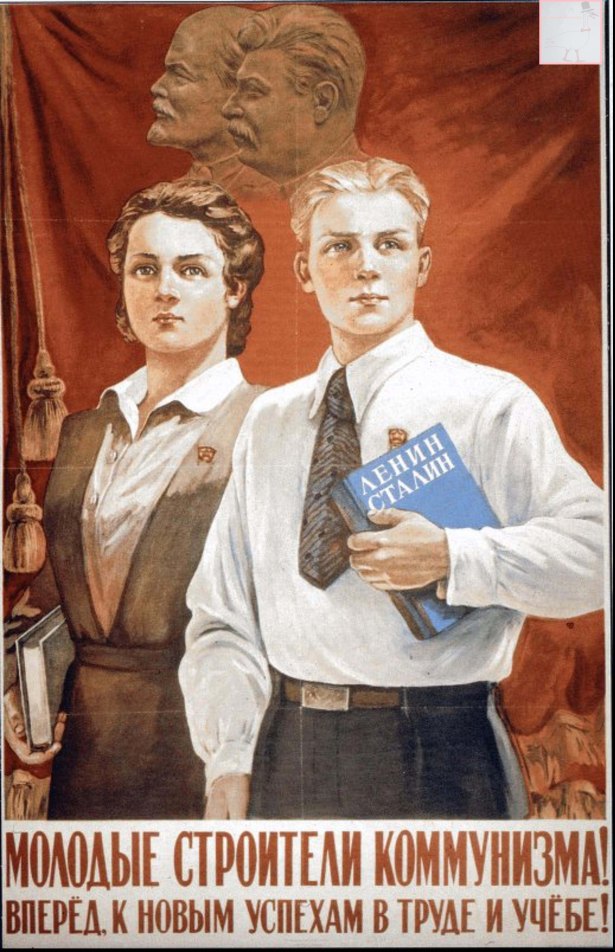
Unknown artist, no caption, 1952
Stalin poster of the week is a weekly excursion into the fascinating world of propaganda posters of Iosif Stalin, leader of the USSR from 1929 until his death in 1953.
Here, Anita Pisch will showcase some of the most interesting Stalin posters, based on extensive research in the archives of the Russian State Library, and analyse what makes these images such successful propaganda.
Anita’s new, fully illustrated book, The personality cult of Stalin in Soviet posters, 1929 -1953, published by ANU Press, is available for free download here, and can also be purchased in hard copy from ANU Press.
This 1952 poster by an unknown artist highlights the treatment of Stalin as an icon. A huge military portrait of Stalin is wreathed in fruit and flowers and appears to be part of a parade on a Soviet holiday.
Red banners swirl behind the portrait and it appears that a sea of banner-bearing children is marching forward. Of the eight children in front of the portrait, seven are in a variety of national costumes of the republics of the USSR, while the young boy in the check shirt at front left is of uncertain origin, most likely African or African-American.
Negro characters had appeared in pre-revolutionary and post-revolutionary literature, often as figures from an exotic continent where injustice and peril reign and, from 1920 onwards, dark-skinned people appeared in Moscow and Petrograd as delegates to the many congresses of the Comintern and Profintern, and as workers from the United States seeking employment during the Depression years.
Stalinist literature and propaganda presented negroes as victims of poor conditions and of racism, with the USSR the champion of equality, with this intensifying after the Great Patriotic War as relations with America deteriorated.*
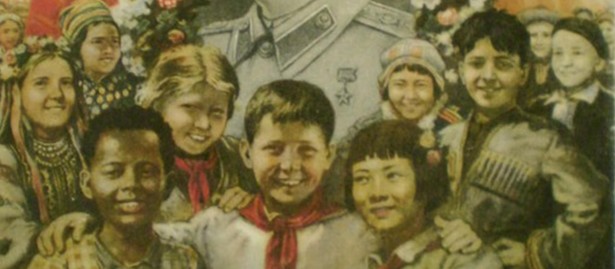
Children of all nationalities enjoy a public holiday celebrating Stalin and the Party
The children in the poster crowd in front of the processional icon, posing informally and smiling for the camera. These children, relaxed and at leisure, are in marked contrast to those in the other posters of this time who are engaged in study or oath-taking ceremonies.
Here, Stalin is a symbol of the opportunities for happiness and fulfilment offered by the Soviet Union, and a champion of racial equality on a global scale.
Despite the casual atmosphere where children are involved, Stalin is even more remote and god-like than ever. The poster has no caption and was published in an edition of only 300, and its purpose is unclear.
Propaganda posters that overtly thanked Stalin for a happy childhood operated on several levels in Stalin’s personality cult. On one level, they appealed to children and instructed them in appropriate behaviour and attitude towards the leader.

His framed portrait wreathed in flowers and fruit, Stalin has become more god-like than ever
By depicting Stalin increasingly as a mythical and iconic figure, children were further encouraged to an attitude of unquestioning obedience and spiritual faith that filled the vacuum left by the suppression of the Orthodox religion in Soviet society.
After the Great Patriotic War and in the last few years of Stalin’s life, the emphasis in propaganda moved from depicting Stalin as an earthly father who was intimately concerned with the everyday problems of the citizenry, to a remote and god-like image of the leader in which he was the saviour of the USSR, the Eastern bloc and, ultimately, the whole world. He thus became a sort of spiritual father to whom one prayed and sent tribute from afar.
Anita Pisch‘s new book, The personality cult of Stalin in Soviet posters, 1929 – 1953, is now available for free download through ANU Press open access, or to purchase in hard copy for $83. This lavishly illustrated book, featuring reproductions of over 130 posters, examines the way in which Stalin’s image in posters, symbolising the Bolshevik Party, the USSR state, and Bolshevik values and ideology, was used to create legitimacy for the Bolshevik government, to mobilise the population to make great sacrifices in order to industrialise and collectivise rapidly, and later to win the war, and to foster the development of a new type of Soviet person in a new utopian world.
Visit Anita Pisch’s website at www.anitapisch.com

